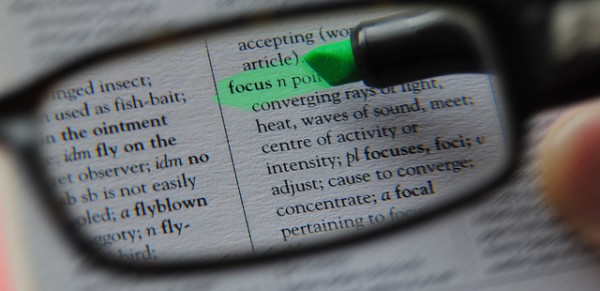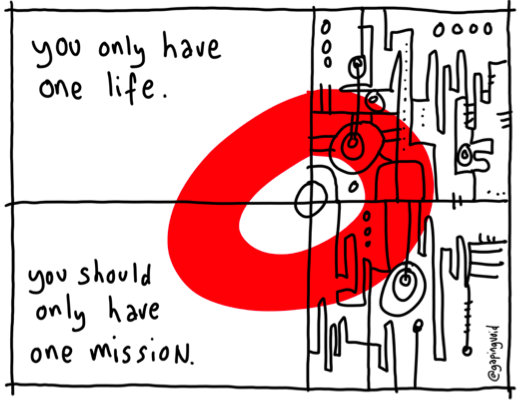It comes as no surprise that we live in an over-communicated society. There’s too much media. Too much noise. How do we cut through the clutter and garner the attention and sales we desire?

Branding expert Laura Ries says the only way to accomplish both is to simplify. We have to focus, and we often have to focus on a single word. We may be “everything” to our customers, but we’ll never see an increase in word of mouth or sales if we focus on being everything. We’ll be scattered and fall prey to the “spray and pray” method.
If we’re serious about attracting new customers and sales, we have to be methodical. We figure out who we are and what we do and want to do before we create content. We collect the data that matters so that we share the right message at the right time to the right people.
An example is BMW. The brand employed an “everything” strategy a few years ago, which resulted in them placing 11th in sales. The brand saw the error of its ways and decided to focus on a single word: “drivability.” The results speak for themselves; the brand surpassed Mercedes and Audi in sales in 2013.
Focusing on a single word was a risk for BMW, but it wasn’t a sacrifice. Because the brand focused on drivability, it became associated with other characteristics like “safety” and “luxury,” an association that Laura calls a “halo effect.”
Want branding tips from Laura Ries and other top minds? Get your free Branding Rules ebook now!
In addition, focusing gave BMW a way to guide the conversation. When the brand didn’t focus on a single word and idea, its customers didn’t know what to say. They needed some boundaries for the conversation, an anchor to hold them steady.
Katy Perry used a similar tactic with her “Firework” video contest. She gave her audience some basic guidelines, then stepped back so that they could speak. The result was a plethora of videos that not only stirred the heart with its “My firework is…” message but also resulted in a number of thank you’s to Katy, producing more brand affinity and increasing album sales.
Focusing also can produce a customer-centric mindset. Because BMW focused on the word and idea it wanted to drive into its customers’ minds and hearts, it chose the word that resonated with them. It was and is the word most pertinent to them because of its emotional and rational appeal.
Focusing allowed BMW to sell on a platform other than price, too. It can now sell on its story because it’s not telling just a story anymore. The brand is telling a strong story, the one that matters to its customers.
If we want to replicate BMW’s success, we have to stop with the “everything” strategy. We don’t have to put everything into each press release, blog post and page on the website. We instead focus on a single word and idea, resulting in a hub around which to center content. It becomes the centrifugal force, the glue that holds things together. Every piece of content serves our focus in some way and drives home the idea we want our customers to remember.

Laura offers more advice for how to build a strong brand via visual hammers in her book by the same name. Before we work on creating that hammer, though, we have to do one and only one thing: focus.
We first have to figure out who we are and what we want to communicate to our customers. When we do that, we’ll have stronger strategies, stronger stories and stronger sales.
Want to hear more amazing marketing and PR ideas? Check out this recap of Demand Success!
Image: Mark Hunter (Creative Commons)![]()

